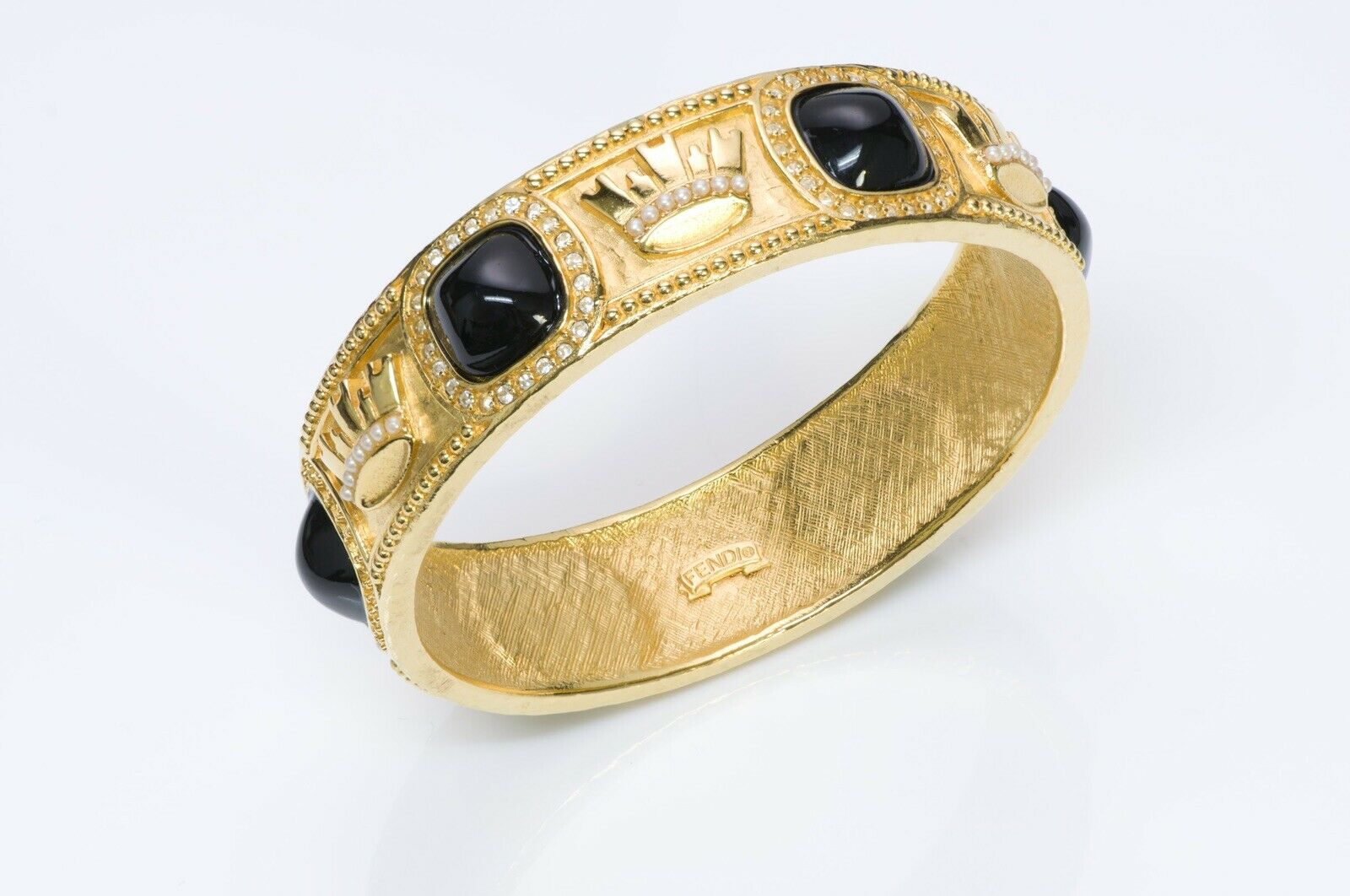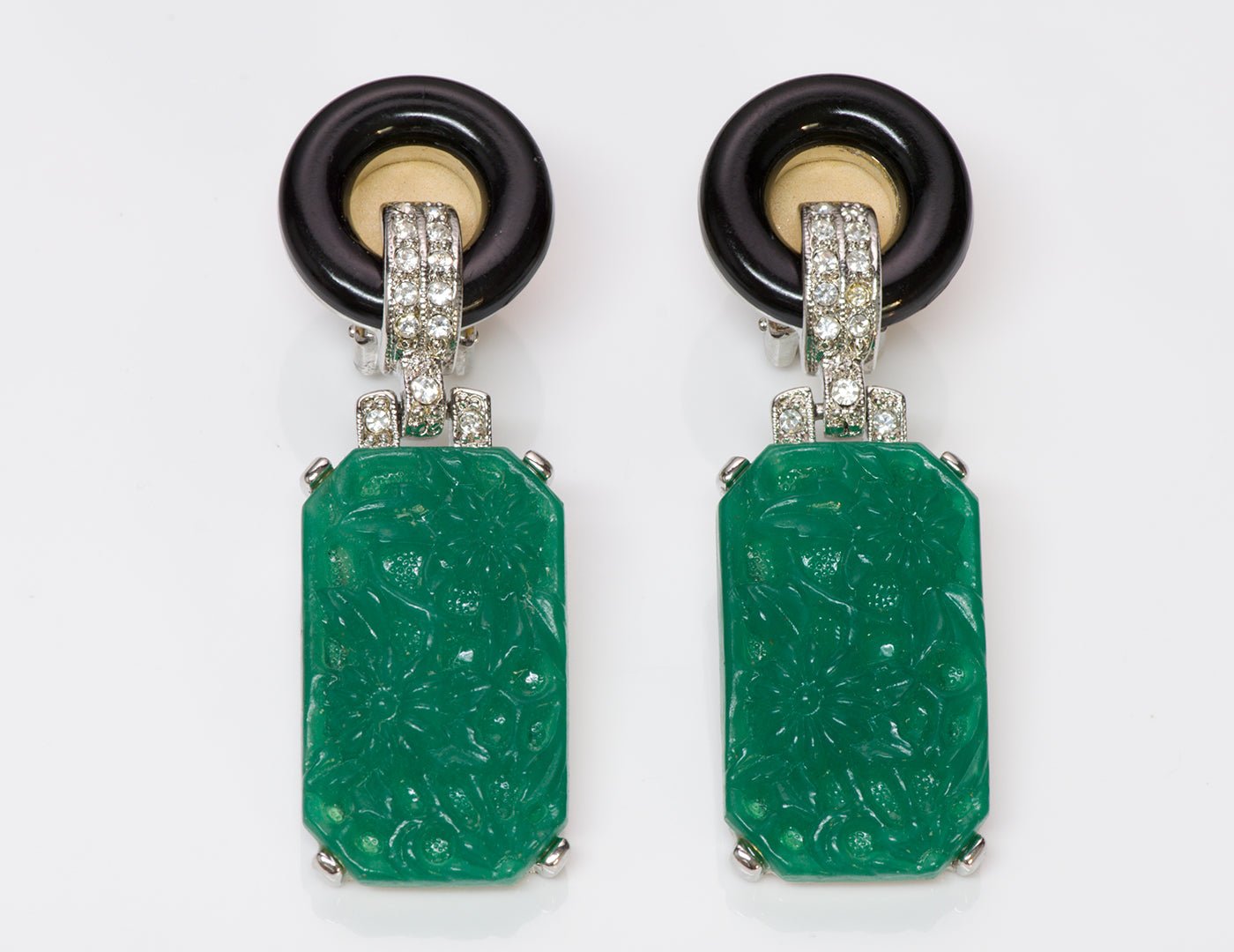
The Fendi House and Its Jewelry
The House’s Roots
With its roots on the Via del Plebiscito, a busy street in the heart of Rome, the Fendi brand was originally a simple small leather goods shop run by Adele and Edoardo Fendi. At the time they were the only brand with an inhouse fur atelier, being a sort of secret workshop.
Of many factors, hard work and the creative energy of the couple’s five daughters, led to quick success and in 1965 a young german designer joined the House. This designer, Karl Lagerfeld revolutionized the wearing of fur, reinterpreting it into a fashionable item of clothing. In 1977, the House’s ready-to-wear collection was released. Side by side with Silvia Venturini Fendi, the two released many classics like the timeless Peekaboo and the legendary Baguette bag. Their fame and reputation soared to new literal heights when their 2007 fashion show on the Great Wall of China was the first to be visible from space.
Representative of the company’s creative and artistic vision, the Fendi House focuses on craftsmanship and quality. From an infinite array of colors and materials, the Fendi craftsmen get down to work. Paying particular attention to the quality of the materials, Fendi’s assembly is done by hand. While this describes the process of making handbags, Fendi jewelry is not exempt from the House of Fendi code of quality.
Fendi Jewelry
Most Fendi jewelry pieces are classified as fashion jewelry or costume jewelry. Fendi fashion jewelry is made of base metals and alloys, often plated with precious metals, and incorporates semi precious or imitation stones. Meant to be worn with a specific outfit, fashion jewelry emphasizes color, style and current trends more often than fine jewelry. The materials can also vary and Fendi fashion jewelry offers a wide variety to choose from, of which are glass, leather, and stones.
Glass
Some good examples of Fendi jewelry includes these Fendi gold plated poured glass earrings. As the name suggests, these earrings utilize the art of poured glass and gold plating. 
The technique of pouring glass involves pouring hot molten glass into molds of various shapes. The glass is mostly colored, and upon cooling, it has a translucent or cloudy character and a smooth finish. The molded glass is then set into a frame to complete the piece. Another method involves pouring hot colored glass directly into the place where it is to be set and then soldered on to the rest of the piece.
Leather
This Fendi crocodile bangle bracelet from the Fendi Spring 2015 collection is another great example of the work behind Fendi jewelry pieces. The bangle bracelet is made from dyed crocodile leather. The real crocodile leather is much more rare, not as easily accessible as say cow leather and thus is highly sought after.

This leather is also considered to be harder to work with and requires special training, thus goods made of crocodile leather are normally on the higher end of the price range. Fendi jewelry brings you this quality in the form of a bracelet.
Stones
Fendi jewelry often incorporates semi precious stones, as in the case of this Fendi Stingray Stone Cuff Bracelet. The stones used for this piece are black onyx and a stone called tiger’s eye. Black onyx is known for its healing properties, which are said to be amplified when worn on the wrists, which will be the case with this Fendi jewelry piece. Just like the animal it is named after, the tiger’s eye stone can make one quick and gives strength in both decision making and in luck. Like with onyx, tiger’s eye is also recommended to be worn on the wrists.
With its nearly a century of fine craftsmen, history of innovation and the brand's integrity, this Rome-based fashion house has a lot to offer. Be it a necklace, a pair of unique earrings or an elegant bracelet, Fendi creations are sure to bring a perfect finishing touch to your outfit, every time.

















